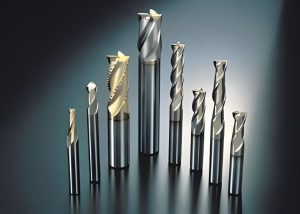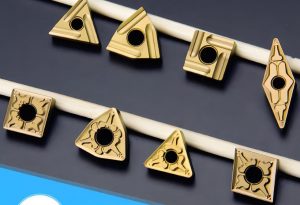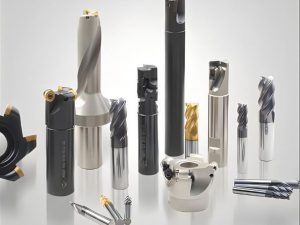Do you know the most commonly used milling cutters in machining?
First of all, the milling cutter is a multi-tooth rotary tool, and each tooth is equivalent to a turning tool fixed on the rotary surface of the milling cutter.
Tungsten steel milling cutter has a longer cutting edge that participates in cutting at the same time, and there is no idle stroke, so the productivity is higher. There are many types of milling cutters with different structures and a wide range of applications. According to their uses, they can be divided into three categories: milling cutters for processing planes, milling cutters for processing grooves, and milling cutters for processing formed surfaces.
Milling cutters of general specifications have been standardized and are generally produced by professional tool factories. Several commonly used milling cutters are now introduced.
The first type, end mill
End mills are the most commonly used milling cutters on CNC machine tools. There are cutting tools on the cylindrical surface and end surface of the end mill. The cutting edge on the cylindrical surface is the main cutting edge, and the secondary cutting edge is distributed on the end surface. The cutting edge is generally a helical tooth, which can increase cutting stability and improve machining accuracy. They can be cut at the same time or separately. However, because there is no cutting edge at the center of the end face of the ordinary end mill, the end mill cannot be used for axial feed when it is working. The end edge is mainly used to machine the bottom plane perpendicular to the side surface. Mainly used for plane milling, groove milling, step face milling and profile milling.
The second type, three-sided edge milling cutter
Three-sided edge milling cutter is referred to as three-sided edge: the three edges have a relief angle, the edge is sharp, and the cutting is brisk. Three-sided edge milling cutters can be divided into straight-tooth three-sided edges and staggered three-sided edges. It is mainly used on horizontal milling machines to process step surfaces and shallow grooves through one or two ends. In addition to the main cutting edge on the circumference of the three-sided edge milling cutter, there are also secondary cutting edges on both sides, thereby improving the cutting conditions, increasing the cutting efficiency, and reducing the surface roughness value. However, the width dimension changes greatly after regrinding, and the toothed face milling cutter can solve this problem.
The third type, face milling cutter
The end face and outer circle of the face milling cutter perpendicular to the shank have cutting edges, which are mainly used for plane milling. The outer cutting edge is the main cutting edge, and the cutting edge on the end face plays the same role as the scraper. Compared with sleeve end mills, face milling cutters have a shorter edge. Face milling cutters are mainly used to process stepped surfaces and planes on vertical milling machines or horizontal milling machines. They are especially suitable for processing larger planes. The face milling cutter with an entering angle of 90° can mill a wide stepped surface at the bottom. The surface milling cutter is used to process the plane, and at the same time, there are more teeth participating in the cutting, and the secondary cutting edge has a smoothing effect, so that the surface roughness value of the machined surface is small, so a larger cutting amount can be used, the productivity is higher, and the application is wide.
Fourth, thread milling cutter
The traditional thread processing methods mainly use thread turning tools to turn threads or use taps and dies to manually tap and buckle. With the development of numerical control processing technology, especially the emergence of three-axis linkage numerical control processing system, a more advanced thread processing method-thread numerical control milling can be realized. Compared with traditional thread processing methods, thread milling has great advantages in processing accuracy and processing efficiency, and it is not restricted by thread structure and thread rotation during processing. For example, a thread milling cutter can process a variety of different rotation directions. Internal and external threads. For the thread that does not allow transitional buckle or undercut structure, it is difficult to process with traditional turning methods or taps and dies, but it is very easy to achieve by CNC milling. In addition, the durability of thread milling cutters is more than ten times or even dozens of times that of taps, and in the process of CNC milling threads, the adjustment of the thread diameter is extremely convenient, which is difficult to achieve with taps and dies. Due to the many advantages of thread milling, the milling process has been widely used in mass thread production in developed countries. With the development of China’s CNC machine tools, it has gradually been accepted and loved by Chinese customers. Thread milling uses the three-axis linkage function of the CNC machining center machine tool and the G02 or G03 spiral interpolation command to complete the thread milling work.
Thread milling cutters, as an advanced tool that has developed rapidly in recent years, are becoming more and more widely accepted by enterprises, and they have shown excellent processing performance. They have become a powerful tool for enterprises to reduce thread processing costs, improve efficiency, and solve thread processing problems. arms.





